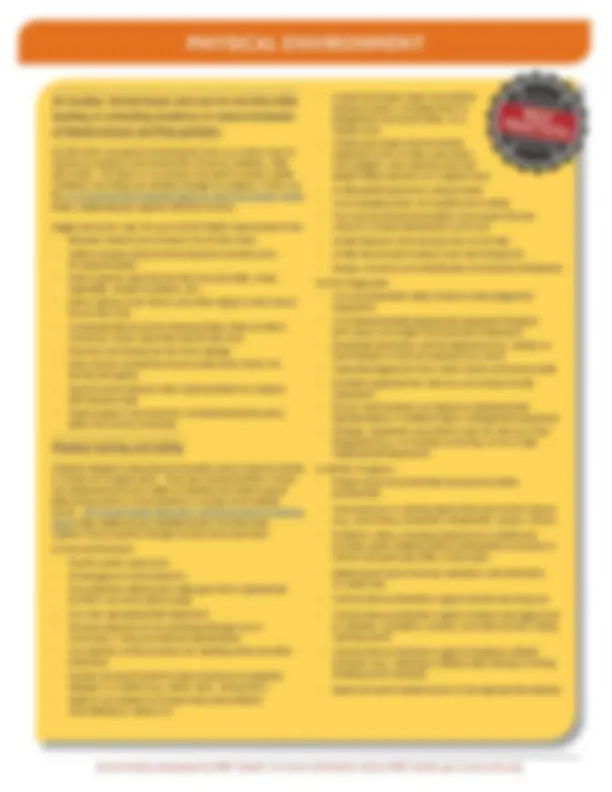




Study with the several resources on Docsity

Earn points by helping other students or get them with a premium plan


Prepare for your exams
Study with the several resources on Docsity

Earn points to download
Earn points by helping other students or get them with a premium plan
Community
Ask the community for help and clear up your study doubts
Discover the best universities in your country according to Docsity users
Free resources
Download our free guides on studying techniques, anxiety management strategies, and thesis advice from Docsity tutors
Guidelines for creating a healthy and safe physical and social school environment. It covers various aspects of school health, including ensuring a clean and welcoming environment, addressing environmental hazards, promoting physical activity, providing health services, and addressing social and emotional needs. The document also includes specific recommendations for maintaining a healthy physical environment, such as implementing no idle zones, ensuring safety on playgrounds and during physical activity, and addressing hazards in the school building.
Typology: Slides
1 / 4

This page cannot be seen from the preview
Don't miss anything!



DESTINATION HEALTHY^ SCHOOLS SUCCESSFUL^ STUDENTS Physical Environment is one of the ten components represented in the Whole School, Whole Community, Whole Child model. A healthy and safe physical school environment promotes learning by ensuring the health and safety of students and staff. Research shows that unhealthy physical school environments can negatively impact children’s health, attendance, concentration, and academic performance. A healthy physical school environment addresses a school’s physical condition during normal operation as well as during renovation (e.g., ventilation, moisture, temperature, noise, and natural and artificial lighting), and protects occupants from physical threats (e.g., crime, violence, traffic, and injuries) and biological and chemical agents in the air, water, or soil as well as those purposefully brought into the school (e.g., pollution, mold, hazardous materials, pesticides, and cleaning agents). ~ Centers for Disease Control and Prevention
A whole child approach, which ensures each student is healthy, safe, engaged, supported, and challenged, sets the standard for comprehensive, sustainable school improvement and provides for long-term student success. October 2016
Ways the WHOLE SCHOOL, WHOLE COMMUNITY, WHOLE CHILD components
BEST PRACTICES
No Idle Zones are quickly becoming the norm as schools seek to improve air quality in and around the school for students, staff, and visitors. The toxins in car exhaust can lead to serious health conditions and idling can actually damage car engines. Check out the US Environmental Protection Agencies Idle Free Schools Toolkit (https://www.epa.gov/region8/idle-free-schools). Suggested action steps for your School Health Improvement Plan:
Students engage in daily physical education and/or physical activity in schools on a regular basis. There are several practices schools can implement to ensure safety of students and reduce injuries while being active on school grounds or during school athletic events. The School Health Index (SHI): Self-Assessment & Planning Guide (http://www.cdc.gov/healthyschools/shi/index.htm) captures these practices through out the assessment tool. In Physical Education: